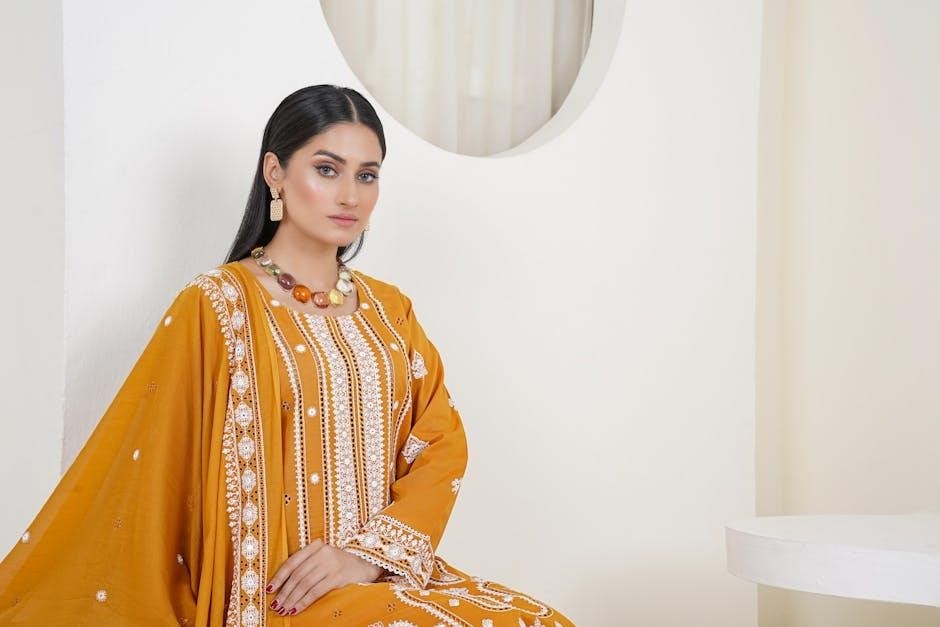
pdf embroidery patterns free
Explore free PDF embroidery patterns, perfect for all skill levels. These downloadable designs offer creativity and versatility, ideal for home decor, wearable art, and thoughtful gifts, inspiring endless possibilities.
What Are PDF Embroidery Patterns?
PDF embroidery patterns are digital templates designed for hand embroidery projects. They are typically downloaded as printable files, featuring detailed designs, stitch guides, and instructions. These patterns are versatile, offering a wide range of styles, from floral motifs to geometric shapes, suitable for beginners and experienced embroiderers alike. Many free PDF embroidery patterns are available online, providing access to beautiful and creative designs without cost. They often include step-by-step instructions, making them ideal for learning new stitches or techniques. Whether for home decor, wearable art, or gifts, these patterns are a convenient and cost-effective way to explore embroidery, allowing crafters to bring their creative ideas to life with ease.
Where to Find Free PDF Embroidery Patterns
Discover free PDF embroidery patterns on popular websites like Craft Passion and LoveCrafts, or explore social media and online communities for inspiration and downloads.
3.1 Popular Websites
Several websites offer a wide variety of free PDF embroidery patterns for download. Craft Passion and LoveCrafts are top choices, providing an extensive library of designs suitable for all skill levels. Craft Passion features floral, animal, and landscape themes, while LoveCrafts offers seasonal and trendy patterns like the Fall Bloom design. Missouri Star and BERNINA also provide free embroidery resources, catering to both beginners and experienced crafters. These platforms often include practical guides, tutorials, and inspiration to enhance your embroidery projects. Whether you’re looking for minimalist designs or intricate patterns, these websites are excellent starting points for your creative journey.
3.2 Social Media and Communities
Social media platforms like Instagram, Facebook, and Pinterest are vibrant hubs for discovering free embroidery patterns. Many embroidery enthusiasts share their designs and inspiration online, creating a supportive community. Accounts like Craft Passion and LoveCrafts often post downloadable PDF patterns and tutorials, making it easy to find projects for all skill levels. Online forums and embroidery groups also offer a space to exchange ideas, learn from others, and showcase your work. These communities are perfect for connecting with fellow embroiderers, gaining motivation, and accessing a wealth of creative resources. Whether you’re a beginner or an experienced crafter, social media and online communities can inspire and guide your embroidery journey.
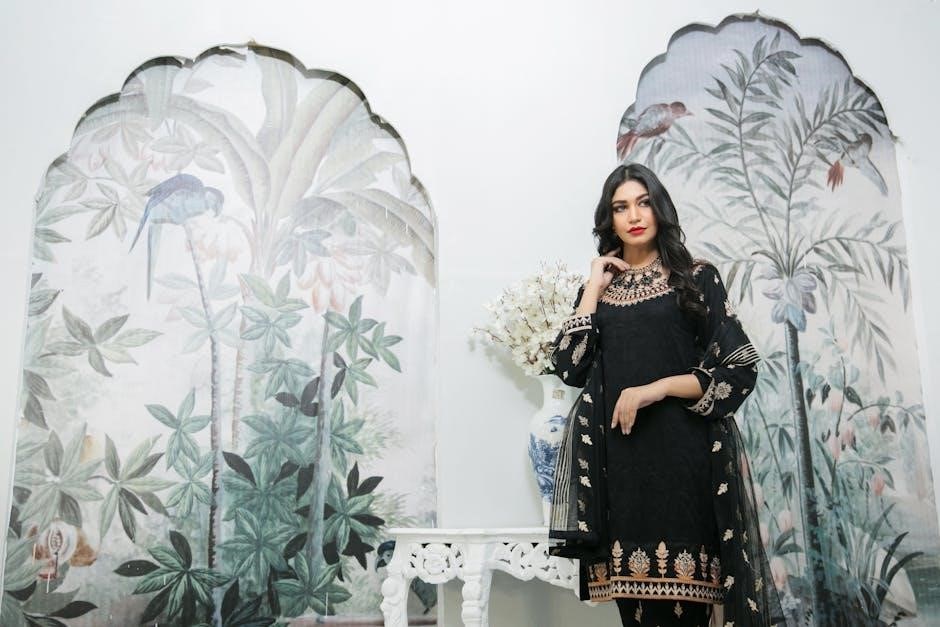
Why Choose Free PDF Embroidery Patterns?
Opting for free PDF embroidery patterns offers numerous benefits, making them an excellent choice for crafters of all levels. They provide an affordable way to explore various designs without financial commitment, perfect for experimenting with different styles. These patterns are easily accessible, requiring only a quick download, and often come in versatile formats suitable for multiple projects. Many free PDF patterns are designed with simplicity in mind, catering to beginners while still offering creative options for advanced embroiderers. Additionally, they allow you to practice and refine your skills without the pressure of costly materials. With a wide range of themes and styles available, free PDF patterns inspire creativity and provide endless opportunities for personalized craft projects.
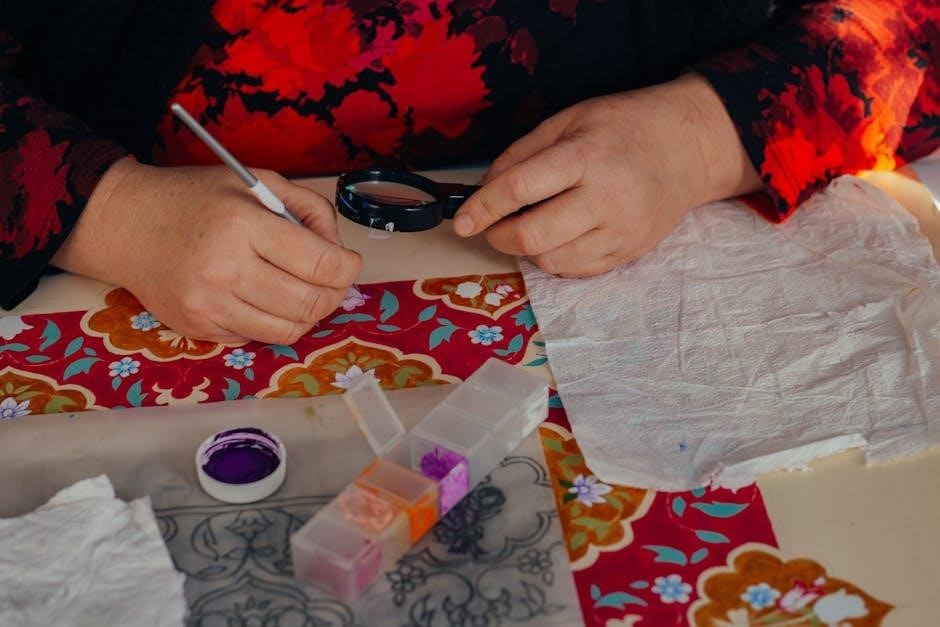
How to Download and Use Free PDF Patterns
Downloading and using free PDF embroidery patterns is a straightforward process. Start by visiting reputable websites or communities offering these designs. Once you find a pattern, click the download link to save the PDF to your device. Print the pattern on standard paper or transfer it directly to fabric using tracing or stabilizer methods. Ensure you have essential tools like an embroidery hoop, needles, and floss. Follow the design instructions or use your creativity to customize the pattern. These PDFs are ideal for various projects, from home decor to wearable art, making them versatile for crafters of all skill levels. Many patterns also include tutorials, perfect for beginners looking to refine their embroidery skills.

Benefits of Using Free PDF Embroidery Patterns
Using free PDF embroidery patterns offers numerous advantages for crafters. They provide an affordable way to explore various designs without financial commitment, making embroidery accessible to everyone. These patterns are often versatile, suitable for projects like home decor, wearable art, and gifts, catering to diverse skill levels. Many PDFs include step-by-step instructions, ideal for beginners, while experienced embroiderers can customize them for unique creations. Additionally, free patterns encourage creativity and experimentation, allowing crafters to refine their skills and explore new techniques. With a wide range of styles available, from floral to geometric designs, free PDF patterns inspire endless possibilities, fostering a sense of community among embroiderers who share and discover new ideas together.

Types of Embroidery Patterns
Embroidery patterns come in diverse styles, including floral, geometric, and minimalist designs. These versatile options cater to various skill levels and projects, offering endless creative possibilities for crafters.
7.1 Floral Patterns
Floral embroidery patterns are timeless and versatile, featuring intricate designs of flowers, leaves, and stems. These patterns are perfect for adding a touch of elegance to any project, from home decor to wearable art. They often incorporate a variety of stitches, such as the lazy daisy and satin stitch, allowing embroiderers to experiment with texture and detail. Many free PDF patterns offer customizable floral motifs, making them suitable for both beginners and experienced crafters. Whether you’re creating a delicate bloom on a hoop or a vibrant bouquet on fabric, floral patterns bring life and beauty to your embroidery work.
7.2 Geometric Patterns
Geometric embroidery patterns offer a modern and structured aesthetic, featuring shapes like triangles, circles, and lines. These designs emphasize symmetry and repetition, creating visually striking compositions. Ideal for those who enjoy clean lines and abstract art, geometric patterns are versatile and can be used for home decor, accessories, or clothing. Many free PDF patterns include customizable motifs, allowing embroiderers to experiment with colors and scales. Perfect for all skill levels, these patterns provide a refreshing contrast to floral designs, offering a contemporary twist to traditional embroidery. Whether you’re creating wall art or embellishing fabric, geometric patterns bring a sleek, minimalist charm to your projects.
7.3 Minimalist Designs
Minimalist embroidery patterns are perfect for those who appreciate simplicity and clean lines. These designs focus on basic shapes, subtle details, and open spaces, creating a modern and understated look. Ideal for beginners, minimalist patterns often feature simple motifs like stars, dots, or minimal florals, requiring fewer stitches and less complexity. They are versatile and can be used to embellish clothing, accessories, or home decor items. Many free PDF patterns offer customizable options, allowing you to adapt the design to your preference. With a focus on neutral colors and clean aesthetics, minimalist embroidery brings a timeless charm to any project, making it a great choice for those seeking a sleek, contemporary style.
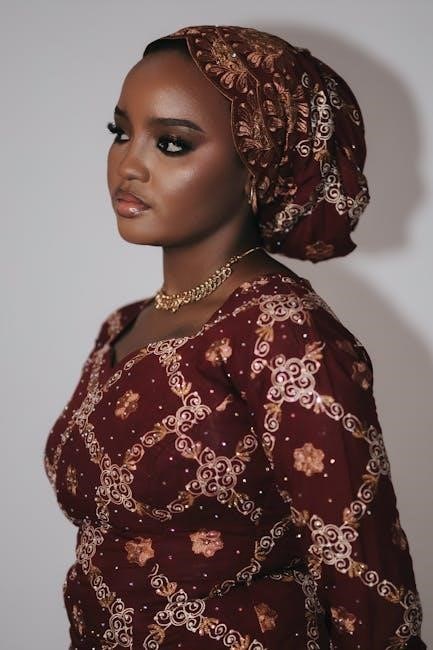
Tools and Materials Needed
Essential tools include embroidery hoops, needles, floss, and fabric. Optional supplies like fabric markers and stabilizers enhance your stitching experience, ensuring precise pattern transfers and fabric stability.
8.1 Essential Tools
To get started with embroidery, you’ll need a few basic tools. An embroidery hoop is essential for keeping fabric taut, making stitching easier and more precise. Choose a hoop size that matches your project. Embroidery needles are another must-have; they come in various sizes and types, such as tapestry or sharp needles, depending on fabric thickness. Select a high-quality embroidery floss that’s vibrant and durable, with strands you can separate for different effects. Finally, pick a suitable fabric, like cotton or linen, with a tight weave to support your stitches. These tools form the foundation of your embroidery kit, ensuring a smooth and enjoyable creative process.
8.2 Optional Supplies
While essential tools are a must, optional supplies can enhance your embroidery experience. Embroidery scissors are handy for cutting floss cleanly, and fabric markers help in transferring patterns accurately. Stabilizers like water-soluble film or interfacing can support delicate fabrics. Transfer paper is useful for tracing designs onto fabric. Additionally, embroidery rings or thimbles can aid in maintaining even tension. For more intricate work, beading needles or specialized stitches might be needed. These optional items allow for greater creativity and precision, making your embroidery projects more enjoyable and professional-looking. They cater to specific needs and can be added as you gain confidence in your skills.
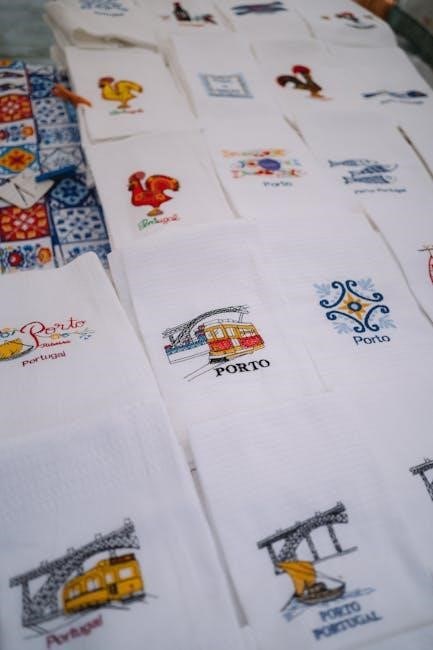
Basic Embroidery Stitches
Master the Running Stitch and Backstitch, foundational techniques for embroidery. These stitches are versatile and essential for creating various designs, from simple to intricate patterns, fostering creativity.
9.1 Running Stitch
The Running Stitch is the most basic embroidery stitch, ideal for outlining designs or creating textures. It involves making small, straight stitches along the fabric, evenly spaced. This stitch is perfect for beginners, as it requires minimal technique and is easy to learn. The Running Stitch is versatile and can be used in various embroidery patterns, from simple decorative lines to intricate details. When using free PDF embroidery patterns, the Running Stitch is often the starting point for many designs. It can also be modified by changing the length or spacing of the stitches to create different effects. Mastering this stitch will provide a solid foundation for more complex embroidery techniques.
9.2 Backstitch
The Backstitch is a fundamental embroidery stitch used to create bold, unbroken lines. It is ideal for outlining designs, lettering, and creating definition in patterns. The stitch involves bringing the needle up and down in a straight line, working backward to form continuous lines. This stitch is versatile and works well for both simple and intricate designs. The Backstitch is particularly useful for creating sharp, clean lines in free PDF embroidery patterns. It is also reversible, making it suitable for stitching on both sides of the fabric. While it is slightly more complex than the Running Stitch, the Backstitch is still accessible for beginners. Mastering this stitch will allow you to add clarity and structure to your embroidery projects.
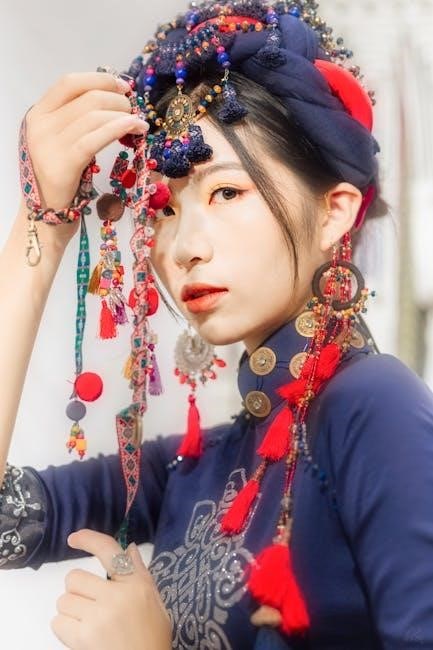
Popular Embroidery Projects
Embroidery is versatile, perfect for home decor, wearable art, and gifts. Popular projects include customizing clothing, creating decorative pillows, and crafting personalized items, making it a creative outlet for all.
10.1 Home Decor
Embroidery patterns are perfect for enhancing home decor. Add personalized touches to pillowcases, tablecloths, or wall art with intricate floral, geometric, or minimalist designs.
These patterns allow for creativity in customizing linens, curtains, and even furniture covers. Use vibrant floss colors to match your interior style, creating unique pieces that reflect your taste.
Whether it’s a delicate flower motif or a bold geometric shape, embroidery can elevate any room’s aesthetic. Patterns are easily downloadable as PDFs, making it simple to start your next decor project.
Additionally, embroidered home decor items make thoughtful gifts, showcasing your craftsmanship and attention to detail. Explore various styles to find the perfect design for your space or as a heartfelt gift.
10.2 Wearable Art
Transform your clothing and accessories into unique wearable art with free PDF embroidery patterns. From delicate floral motifs to bold geometric designs, these patterns allow you to personalize jackets, shirts, tote bags, and more.
Embroidery adds a personal touch to denim, creating one-of-a-kind pieces that reflect your style. Patterns are easy to download and transfer, making it simple to enhance your wardrobe.
Whether you’re embroidering a minimalist design or a vibrant floral pattern, wearable art is a great way to express creativity. Use high-quality floss and stabilizing materials for professional-looking results.
These patterns are perfect for upcycling old clothes or creating gifts. With countless designs available, you can experiment with different styles and techniques to make your embroidery truly stand out.
10.3 Gifts
Free PDF embroidery patterns are a great way to create thoughtful and personalized gifts. From embroidered pillow covers to custom shirts, these designs allow you to add a personal touch to your presents.
Whether it’s for a birthday, holiday, or special occasion, handmade embroidery gifts show effort and care. Patterns are easy to download and use, making them ideal for last-minute or heartfelt gifts.
Embroidered items like baby blankets, tote bags, and decorative wall art are popular choices. You can also customize gifts with names, dates, or meaningful quotes for a unique touch.
These patterns are perfect for crafting something truly special, ensuring your gifts stand out and leave a lasting impression. With so many designs available, you’ll find the perfect fit for any recipient.
Tips for Working with PDF Patterns
Use clear instructions for printing and scaling patterns. Transfer designs accurately and choose suitable materials. Follow tips to ensure perfect stitching and professional-looking results every time.
11.1 Stabilizing Fabric
Stabilizing fabric is crucial for achieving crisp, even stitches. Use an embroidery hoop to keep fabric taut, preventing distortion and ensuring precise stitching. Adding stabilizers like interfacing or water-soluble toppings can enhance stability, especially on delicate fabrics. Proper stabilization allows for smoother stitching and professional-looking results, making your embroidery projects more enjoyable and successful.
11.2 Transferring Patterns
Transferring embroidery patterns to fabric is a straightforward process. Use a pencil or fabric marker to trace the design onto your fabric. For accuracy, place the pattern under the fabric and trace with a light source or use transfer paper. Iron-on transfers are another option, especially for detailed designs. Ensure the pattern is centered and evenly spaced before tracing. For dark fabrics, use a white pencil or chalk for visibility. Double-check the transfer for any errors before stitching. Proper pattern transfer ensures your embroidery project starts smoothly and maintains its intended aesthetic. This step is crucial for achieving professional-looking results, especially for intricate designs.
11.3 Choosing the Right Floss
Selecting the right embroidery floss is essential for achieving your desired design. Choose colors that match your pattern and fabric to ensure a cohesive look. Embroidery floss is typically made of multiple strands that can be separated for varying thickness. Thicker floss creates bold lines, while thinner strands offer delicate details. Consider the fabric type—cotton floss works best on natural fabrics, while metallic or specialty floss adds elegance to any project. Always check the color chart provided with your pattern for accuracy. For beginners, starting with basic primary colors is a great way to build your collection. Proper floss selection enhances the overall appearance and longevity of your embroidery work, making it a crucial step in your creative process.
Troubleshooting Common Mistakes
Common embroidery mistakes include thread breakage, uneven stitches, and fabric puckering. Adjusting tension, using the right needle size, and selecting appropriate fabric can resolve these issues effectively.
12.1 Needle and Thread Issues
Common issues with needles and threads in embroidery include tangling, breakage, and uneven stitching. Using the wrong needle size or type can cause thread to break or fray. Dull or bent needles may also lead to poor stitch quality. To avoid these problems, always use sharp, high-quality embroidery needles and matching thread weights. Regularly conditioning embroidery floss can prevent tangling and knots. Ensure the needle’s eye is large enough for the thread to pass through smoothly. If threads keep breaking, check for fabric tension or needle damage. Using the correct thread type for your fabric ensures better stability and reduces issues during stitching. Always test your thread and needle on scrap fabric before starting a project.
12.2 Tension Problems
Tension issues are common in embroidery, especially with hand-stretched fabric or improper hoop use. If fabric is too tight, it may pucker or distort stitches, while loose fabric can lead to uneven stitching. To fix this, ensure the fabric is taut but not overly tight in the hoop. Adjust the hoop screw regularly to maintain even tension. Thread tension is another challenge; too tight can cause fabric to pucker, while too loose results in sloppy stitches. To resolve this, gently pull the thread and use a thimble to guide it evenly. Proper tension ensures smooth stitching and professional-looking results. Always test tension on scrap fabric before starting a project. Regularly checking and adjusting tension helps prevent embroidery mistakes and enhances overall quality. Proper tension control is key to achieving desired stitch consistency and fabric stability.
12.3 Fabric Choice
Fabric selection is crucial for successful embroidery. Choose fabrics with a tight weave, like cotton or linen, for better stability and stitch visibility. Loose-weave fabrics can cause threads to sag or disappear. For beginners, cotton is ideal due to its durability and ease of use. Denim and felt are also popular for specific projects; Always pre-wash fabric to remove sizing and ensure shrinkage won’t distort stitches. Avoid stretchy fabrics like knits unless using stabilizer. Test fabric scraps first to gauge how it handles stitching. Proper fabric choice ensures clean, even stitches and a professional finish. Match fabric type to project needs, such as clothing or home decor, for optimal results.
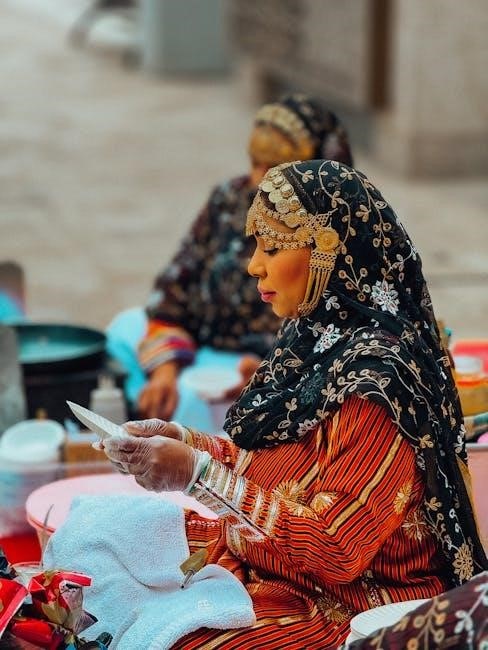
Advanced Embroidery Techniques
Elevate your embroidery with shading, layering, and combining patterns. These techniques add depth and complexity, transforming simple designs into intricate, professional-grade pieces that showcase your artistic skill and creativity. Mastering these methods opens up endless possibilities for unique and visually striking embroidery projects. Start by experimenting with shading to create dimension, then layer stitches for texture, and finally, combine patterns to craft one-of-a-kind designs. With practice, you can achieve stunning results that stand out, whether for personal use or as gifts. These advanced techniques are perfect for those looking to challenge themselves and take their embroidery to the next level.
13.1 Shading and Depth
Shading and depth in embroidery create dimensional, lifelike designs. By layering stitches and using varied thread colors, embroiderers can achieve realistic shading. This technique enhances details, making patterns appear more dynamic. Free PDF patterns often include shading guides, helping embroiderers master this skill. Start with simple gradient techniques, gradually experimenting with complex layering. Tools like embroidery floss with varying thicknesses and hues allow for subtle transitions. Mastery of shading and depth transforms basic designs into professional-grade art, perfect for intricate projects like portraits or landscapes. Explore free PDF patterns designed for shading to elevate your embroidery and add stunning realism to your creations. This advanced technique is a game-changer for embroiderers seeking to push their artistic boundaries.
13.2 Layering Stitches
Layering stitches is a versatile technique that adds texture and complexity to embroidery designs. By stacking different stitches, embroiderers can create intricate patterns and dimensional effects. Free PDF patterns often include detailed guides for layering, making it accessible for all skill levels. Start with simple combinations like the running stitch and backstitch, then progress to more complex layers. This method is ideal for creating floral motifs, geometric shapes, and even realistic imagery. Experiment with various thread colors and fabric types to enhance the layered effect. Layering stitches allows embroiderers to express creativity while achieving professional-looking results. It is a key technique for transforming basic patterns into stunning, eye-catching designs. Explore free PDF resources to master this essential embroidery skill and elevate your projects.
13.3 Combining Patterns
Combining patterns allows embroiderers to create unique and personalized designs. By merging different motifs or styles, you can craft intricate and visually appealing embroidery. This technique is ideal for those who enjoy experimenting with creativity. Start by selecting complementary patterns from free PDF resources, ensuring they align in scale and theme. For example, mix floral elements with geometric shapes to create a balanced design. Tools like tracing paper or digital software can help visualize the final piece. Combining patterns is a great way to breathe new life into existing designs, making your embroidery stand out. It’s also a practical approach for customizing projects to suit personal preferences or specific occasions. Explore free PDF libraries to find diverse patterns and inspire your next creative fusion.
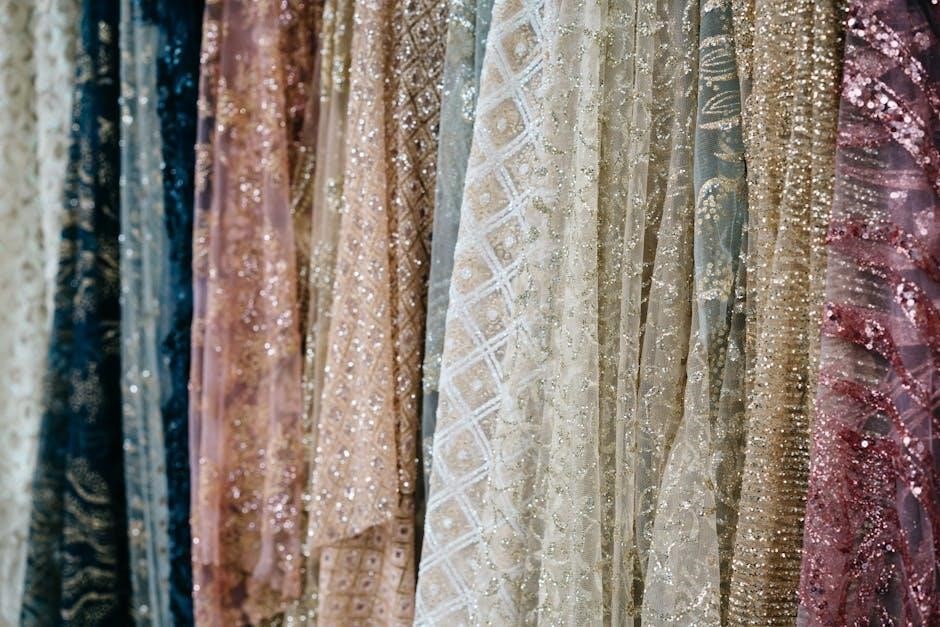
Community and Inspiration
Join online embroidery communities to share your work and gain inspiration. Platforms like Pinterest, Instagram, and Facebook connect embroiderers worldwide, fostering creativity and offering feedback to refine your craft.
14.1 Online Communities
Online communities are vibrant hubs for embroidery enthusiasts to connect, share, and inspire. Platforms like Pinterest, Instagram, and Facebook are filled with groups dedicated to embroidery, offering a space to showcase projects and gain feedback. These communities often feature free PDF patterns, tutorials, and tips, making them invaluable for both beginners and experienced embroiderers. Members share their creations, providing endless inspiration and fostering creativity. Many websites, such as Missouri Star and LoveCrafts, host forums or galleries where users can interact and learn from one another. Joining these communities not only enhances your embroidery journey but also helps you stay updated on the latest trends and resources in the craft.
14.2 Sharing Your Work
Sharing your embroidery projects is a great way to connect with fellow crafters and gain inspiration. Many embroiderers showcase their work on platforms like Pinterest and Instagram, using hashtags to reach a wider audience. Sharing not only builds confidence but also motivates others to try new patterns. Some websites, like Craft Passion, encourage sharing by offering free PDF patterns as a reward for tagging them in posts. Additionally, embroidery communities often host challenges or themed events, making it fun to participate and share your creations. By sharing your work, you inspire others and contribute to the vibrant embroidery community, fostering creativity and collaboration among crafters of all levels.
Free PDF embroidery patterns offer endless creative possibilities for crafters of all levels. Whether you’re a beginner or an experienced embroiderer, these downloadable designs provide inspiration and versatility. From floral motifs to geometric shapes, the variety of patterns ensures there’s something for everyone. By utilizing these resources, you can enhance your skills, explore new techniques, and create beautiful pieces for personal use or as gifts. Embrace the joy of embroidery and share your creations with the growing community of crafters online; With free PDF patterns, the world of embroidery is at your fingertips, ready to inspire and delight!